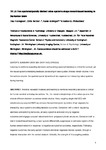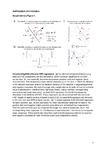Two spatiotemporally distinct value systems shape reward-based learning in the human brain
| dc.contributor.author | Fouragnan, Elsa | |
| dc.contributor.author | Retzler, C | |
| dc.contributor.author | Mullinger, K | |
| dc.contributor.author | Philiastides, MG | |
| dc.date.accessioned | 2018-05-15T14:32:46Z | |
| dc.date.available | 2018-05-15T14:32:46Z | |
| dc.date.issued | 2015-11 | |
| dc.identifier.issn | 2041-1723 | |
| dc.identifier.issn | 2041-1723 | |
| dc.identifier.other | 8107 | |
| dc.identifier.uri | http://hdl.handle.net/10026.1/11508 | |
| dc.description.abstract |
<jats:title>Abstract</jats:title><jats:p>Avoiding repeated mistakes and learning to reinforce rewarding decisions is critical for human survival and adaptive actions. Yet, the neural underpinnings of the value systems that encode different decision-outcomes remain elusive. Here coupling single-trial electroencephalography with simultaneously acquired functional magnetic resonance imaging, we uncover the spatiotemporal dynamics of two separate but interacting value systems encoding decision-outcomes. Consistent with a role in regulating alertness and switching behaviours, an early system is activated only by negative outcomes and engages arousal-related and motor-preparatory brain structures. Consistent with a role in reward-based learning, a later system differentially suppresses or activates regions of the human reward network in response to negative and positive outcomes, respectively. Following negative outcomes, the early system interacts and downregulates the late system, through a thalamic interaction with the ventral striatum. Critically, the strength of this coupling predicts participants’ switching behaviour and avoidance learning, directly implicating the thalamostriatal pathway in reward-based learning.</jats:p> | |
| dc.format.extent | 0-0 | |
| dc.format.medium | Electronic | |
| dc.language | en | |
| dc.language.iso | en | |
| dc.publisher | Springer Science and Business Media LLC | |
| dc.subject | Adolescent | |
| dc.subject | Adult | |
| dc.subject | Avoidance Learning | |
| dc.subject | Brain | |
| dc.subject | Brain Mapping | |
| dc.subject | Decision Making | |
| dc.subject | Electroencephalography | |
| dc.subject | Female | |
| dc.subject | Functional Neuroimaging | |
| dc.subject | Humans | |
| dc.subject | Image Processing, Computer-Assisted | |
| dc.subject | Learning | |
| dc.subject | Magnetic Resonance Imaging | |
| dc.subject | Male | |
| dc.subject | Neural Pathways | |
| dc.subject | Nucleus Accumbens | |
| dc.subject | Reward | |
| dc.subject | Thalamus | |
| dc.subject | Young Adult | |
| dc.title | Two spatiotemporally distinct value systems shape reward-based learning in the human brain | |
| dc.type | journal-article | |
| dc.type | Journal Article | |
| dc.type | Research Support, Non-U.S. Gov't | |
| plymouth.author-url | https://www.webofscience.com/api/gateway?GWVersion=2&SrcApp=PARTNER_APP&SrcAuth=LinksAMR&KeyUT=WOS:000362948500001&DestLinkType=FullRecord&DestApp=ALL_WOS&UsrCustomerID=11bb513d99f797142bcfeffcc58ea008 | |
| plymouth.issue | 0 | |
| plymouth.volume | 6 | |
| plymouth.publication-status | Published online | |
| plymouth.journal | Nature Communications | |
| dc.identifier.doi | 10.1038/ncomms9107 | |
| plymouth.organisational-group | /Plymouth | |
| plymouth.organisational-group | /Plymouth/Faculty of Health | |
| plymouth.organisational-group | /Plymouth/Faculty of Health/School of Psychology | |
| plymouth.organisational-group | /Plymouth/REF 2021 Researchers by UoA | |
| plymouth.organisational-group | /Plymouth/REF 2021 Researchers by UoA/UoA04 Psychology, Psychiatry and Neuroscience | |
| plymouth.organisational-group | /Plymouth/Users by role | |
| plymouth.organisational-group | /Plymouth/Users by role/Academics | |
| plymouth.organisational-group | /Plymouth/Users by role/Researchers in ResearchFish submission | |
| dc.publisher.place | England | |
| dcterms.dateAccepted | 2015-07-20 | |
| dc.identifier.eissn | 2041-1723 | |
| dc.rights.embargoperiod | Not known | |
| rioxxterms.versionofrecord | 10.1038/ncomms9107 | |
| rioxxterms.licenseref.uri | http://www.rioxx.net/licenses/all-rights-reserved | |
| rioxxterms.licenseref.startdate | 2015-11 | |
| rioxxterms.type | Journal Article/Review |



